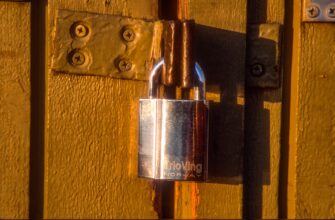In 2025, securing your cryptocurrency assets has become more critical than ever. A Ledger wallet, a popular hardware wallet, requires robust protection measures to prevent unauthorized access. This guide provides a comprehensive overview of how to protect your Ledger wallet with a password in 2025, including best practices, step-by-step instructions, and common mistakes to avoid.
### Why Password Protection Matters for Your Ledger Wallet
A Ledger wallet is a physical device designed to store cryptocurrency securely. However, even the most secure hardware can be compromised if not properly protected. A password is a fundamental layer of defense against unauthorized access, especially in 2025, where cyber threats are evolving rapidly. Without a password, your wallet is vulnerable to brute-force attacks, phishing schemes, and other malicious activities.
### Best Practices for Protecting Your Ledger Wallet
1. **Use a Strong, Unique Password**: Avoid common words or patterns. Opt for a combination of uppercase letters, lowercase letters, numbers, and symbols. For example, $$text{P@ssw0rd!2025}$$ is a strong password. 2. **Enable Two-Factor Authentication (2FA)**: Activate 2FA on your Ledger account to add an extra layer of security. 3. **Store the Password Securely**: Use a password manager like Bitwarden or 1Password to store your password. 4. **Avoid Public Wi-Fi**: Never connect to unsecured networks when accessing your Ledger wallet. 5. **Regularly Update Firmware**: Keep your Ledger wallet firmware updated to protect against known vulnerabilities.
### Step-by-Step Guide to Setting Up a Password for Your Ledger Wallet
1. **Access Your Ledger Wallet**: Connect your Ledger device to a computer and open the Ledger Live app. 2. **Navigate to Settings**: Go to the ‘Settings’ menu and select ‘Security.’ 3. **Set a Password**: Choose the ‘Password’ option and follow the on-screen instructions. 4. **Confirm the Password**: Re-enter the password to confirm it. 5. **Save the Password**: Store the password in a secure location, such as a password manager or a physical safe.
### Common Mistakes to Avoid
– **Using a Weak Password**: A weak password can be easily guessed or cracked. – **Forgetting the Password**: Never write the password down in an insecure location. – **Not Enabling 2FA**: 2FA is a crucial security measure that should never be overlooked. – **Connecting to Unsecured Networks**: Public Wi-Fi can expose your wallet to hackers. – **Ignoring Firmware Updates**: Outdated firmware may contain security vulnerabilities.
### FAQ: Frequently Asked Questions
**Q: What is a password for a Ledger wallet?**
A: A password is a secret code used to unlock your Ledger wallet. It is required to access your cryptocurrency funds and is stored securely on the device.
**Q: How do I change my Ledger wallet password?**
A: To change your password, connect your Ledger device to a computer, open the Ledger Live app, navigate to ‘Settings’ > ‘Security,’ and select ‘Change Password.’ Follow the prompts to update your password.
**Q: What should I do if I forget my Ledger wallet password?**
A: If you forget your password, you may lose access to your funds. Contact Ledger support immediately for assistance. They can help you recover your password if you have a recovery phrase or other verification methods.
**Q: Is it safe to use a password manager for my Ledger wallet?**
A: Yes, using a password manager like Bitwarden or 1Password is highly recommended. It securely stores your password and reduces the risk of forgetting it.
**Q: Can I use the same password for multiple accounts?**
A: No, using the same password for multiple accounts increases the risk of compromise. Use unique passwords for each account to ensure maximum security.
In 2025, protecting your Ledger wallet with a strong password is essential to safeguarding your cryptocurrency assets. By following these best practices and avoiding common mistakes, you can ensure that your digital assets remain secure in an increasingly complex cybersecurity landscape.








